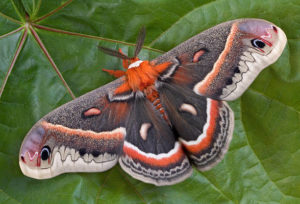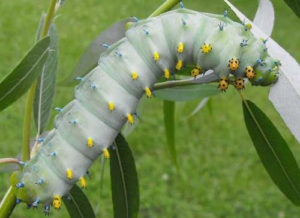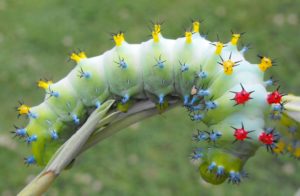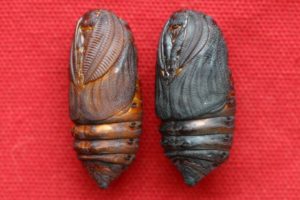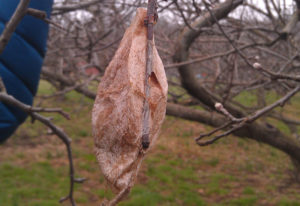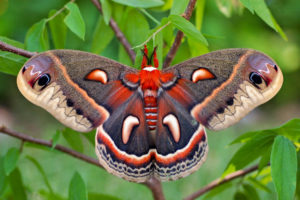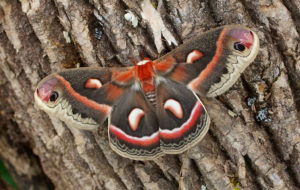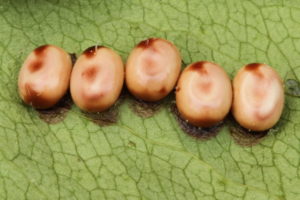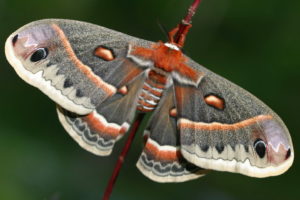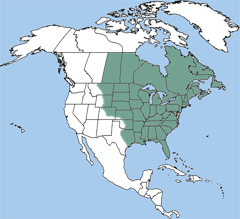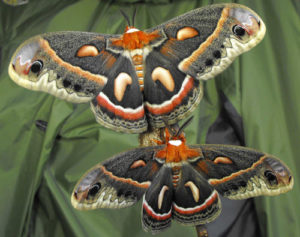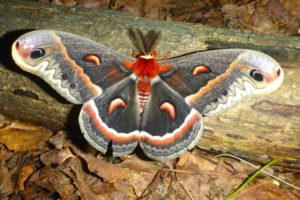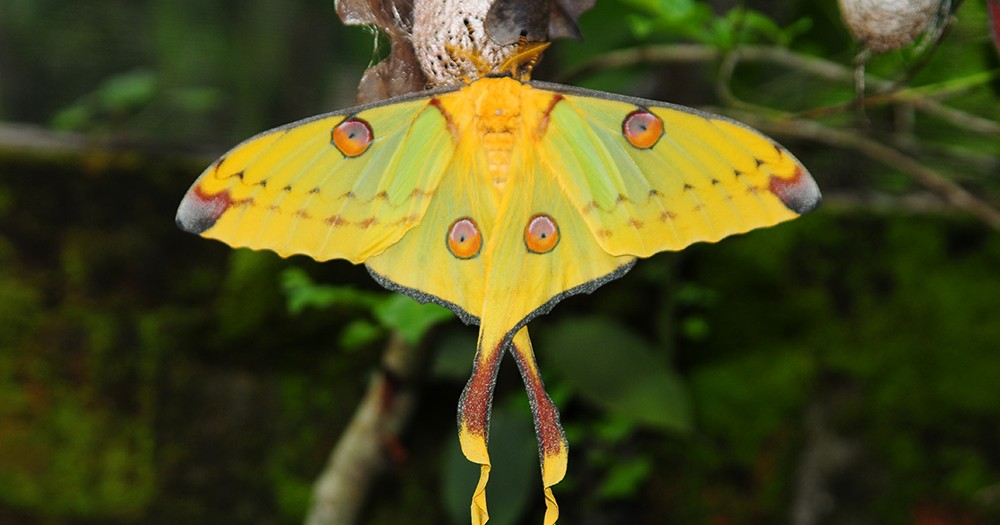Cecropia Moth (Hyalophora cecropia)
The cecropia moth is a member of the family of giant silk moths. It is the largest moth native to North America, with some females having a recorded wingspan of 18 cm. It is commonly found on maple trees.
media.istockphoto.com
Scientific Classification
- Family: Saturniidae
- Genus: Hyalophora
- Scientific Name: Hyalophora cecropia
Description and Identification
Caterpillar
They go through five instars, with the first one being black, the second yellow, and the final three being shades of green. Their bodies are covered with black spines, which emerge from differently colored protuberances. These bumps are reddish-orange near the thorax, yellow closer to the abdomen, and pale blue on both sides. They mature by autumn, growing up to 4-4.5 inches long.
The setae of this caterpillar is not poisonous.
Pupa
They are dark brown, encased within a silk cocoon attached lengthwise along a stem or branch of the host plant. They spend a majority of their lives in this stage, with adult moths emerging from the cocoon mostly during early summer.
Adult Moth
Sexual Dimorphism: Present. The males have larger antennae while the females have a larger abdomen.
Color and Appearance
Forewing: When the wings are opened, they are brownish, with a red coloration noticed near the base. When the wings are closed, a whitish coloration can be observed, followed by a reddish line beyond the post-medial line.
Hindwing: When the wings are opened, they are brownish and are covered with crescent-shaped red spots with white centers. When the wings are closed, a whitish coloration similar to the forewing is observed, though it is larger.
The body of these moths is hairy, with reddish coloring fading to white. Their abdomen alternates between bands of red and white.
Average wingspan: 11 – 18 cm
Flight pattern: Consistent
Season: March-July
Quick Facts
| Other names | Robin moth |
| Distribution | North America, ranging from Nova Scotia and Maine south to Florida; also west across the southern part of Canada and the eastern United States to the Rocky Mountains. |
| Habitat | Both urban and suburban regions |
| Lifespan of Adults | 10 -14 days |
| Predators | Parasitoid wasps and flies, squirrels, some birds |
| Host Plants | Alder, apple, ash, birch, box elder, elm, lilac, maple, plum, poplar, wild cherry, and willow. |
| Adult Diet | Does not feed |
Did You Know
- Noted Swedish zoologist Carl Linnaeus first described this species in his 10th edition of Systema Naturae published in 1758.
- In 2012, a cecropia moth, later nicknamed Georgina, was accidentally shipped to St. John’s in Newfoundland alongside a dogwood shrub shipment. She spent the winter at the Agriculture and Agri-Food research facility there, and after her natural lifespan was over, she was preserved by researchers there for study purposes.
Scientific Classification
- Family: Saturniidae
- Genus: Hyalophora
- Scientific Name: Hyalophora cecropia

